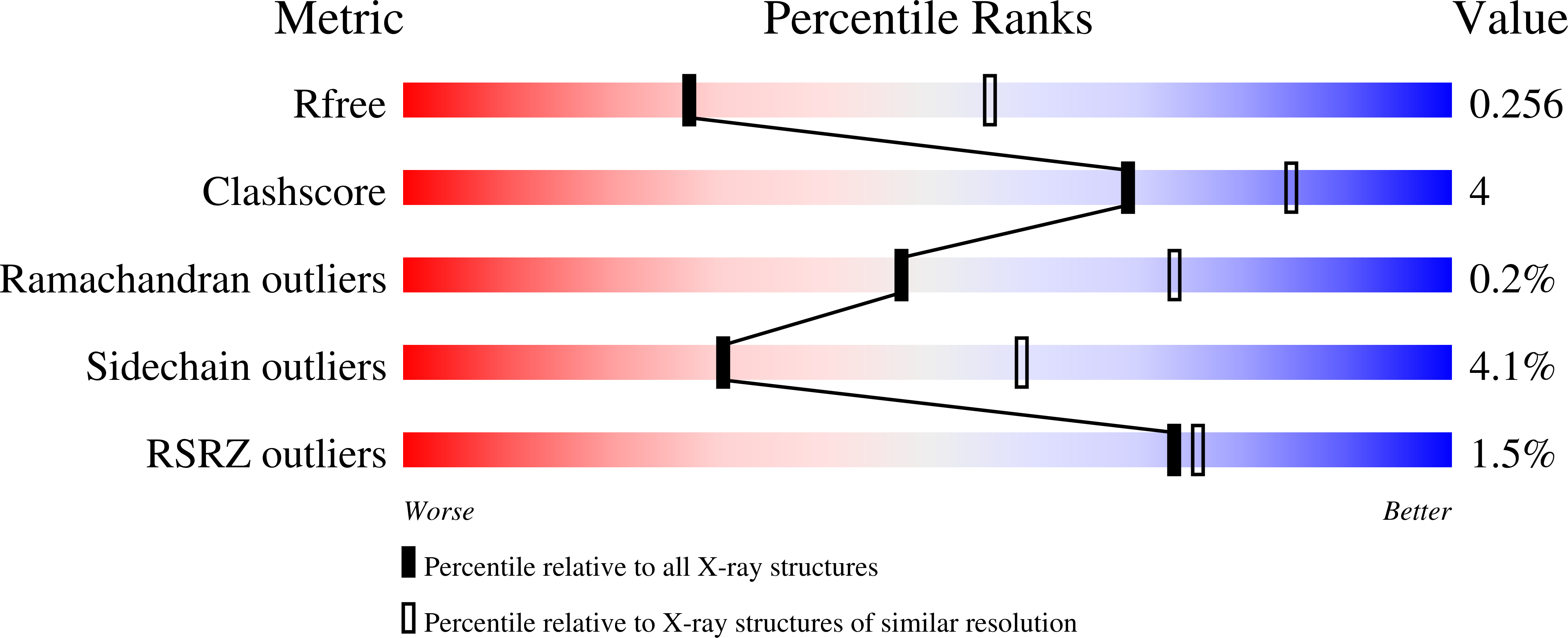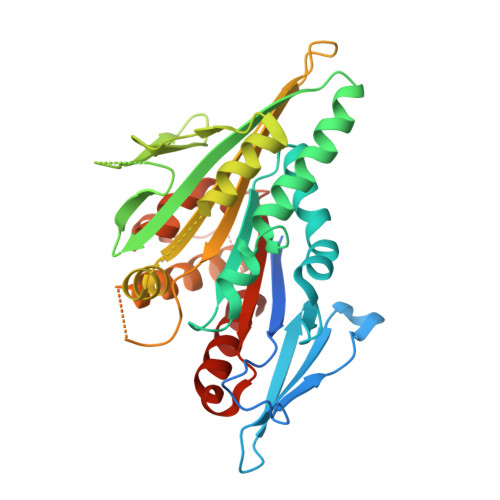Neck Rotation and Neck Mimic Docking in the Noncatalytic Kar3-associated Protein Vik1.
Duan, D., Jia, Z., Joshi, M., Brunton, J., Chan, M., Drew, D., Davis, D., Allingham, J.S.(2012) J Biol Chem 287: 40292-40301
- PubMed: 23043140
- DOI: https://doi.org/10.1074/jbc.M112.416529
- Primary Citation of Related Structures:
4GKP, 4GKQ, 4GKR - PubMed Abstract:
Kar3Vik1 is a heterodimeric kinesin with one catalytic subunit (Kar3) and one noncatalytic subunit (Vik1). Vik1 experiences conformational changes in regions analogous to the force-producing elements in catalytic kinesins. A molecular mechanism by which Kar3 could trigger Vik1's release from microtubules was revealed. These findings will serve as the prototype for understanding the motile mechanism of kinesin-14 motors in general. It is widely accepted that movement of kinesin motor proteins is accomplished by coupling ATP binding, hydrolysis, and product release to conformational changes in the microtubule-binding and force-generating elements of their motor domain. Therefore, understanding how the Saccharomyces cerevisiae proteins Cik1 and Vik1 are able to function as direct participants in movement of Kar3Cik1 and Kar3Vik1 kinesin complexes presents an interesting challenge given that their motor homology domain (MHD) cannot bind ATP. Our crystal structures of the Vik1 ortholog from Candida glabrata may provide insight into this mechanism by showing that its neck and neck mimic-like element can adopt several different conformations reminiscent of those observed in catalytic kinesins. We found that when the neck is α-helical and interacting with the MHD core, the C terminus of CgVik1 docks onto the central β-sheet similarly to the ATP-bound form of Ncd. Alternatively, when neck-core interactions are broken, the C terminus is disordered. Mutations designed to impair neck rotation, or some of the neck-MHD interactions, decreased microtubule gliding velocity and steady state ATPase rate of CgKar3Vik1 complexes significantly. These results strongly suggest that neck rotation and neck mimic docking in Vik1 and Cik1 may be a structural mechanism for communication with Kar3.
Organizational Affiliation:
Department of Biomedical and Molecular Sciences, Queen's University, Kingston, Ontario K7L 3N6, Canada.

















